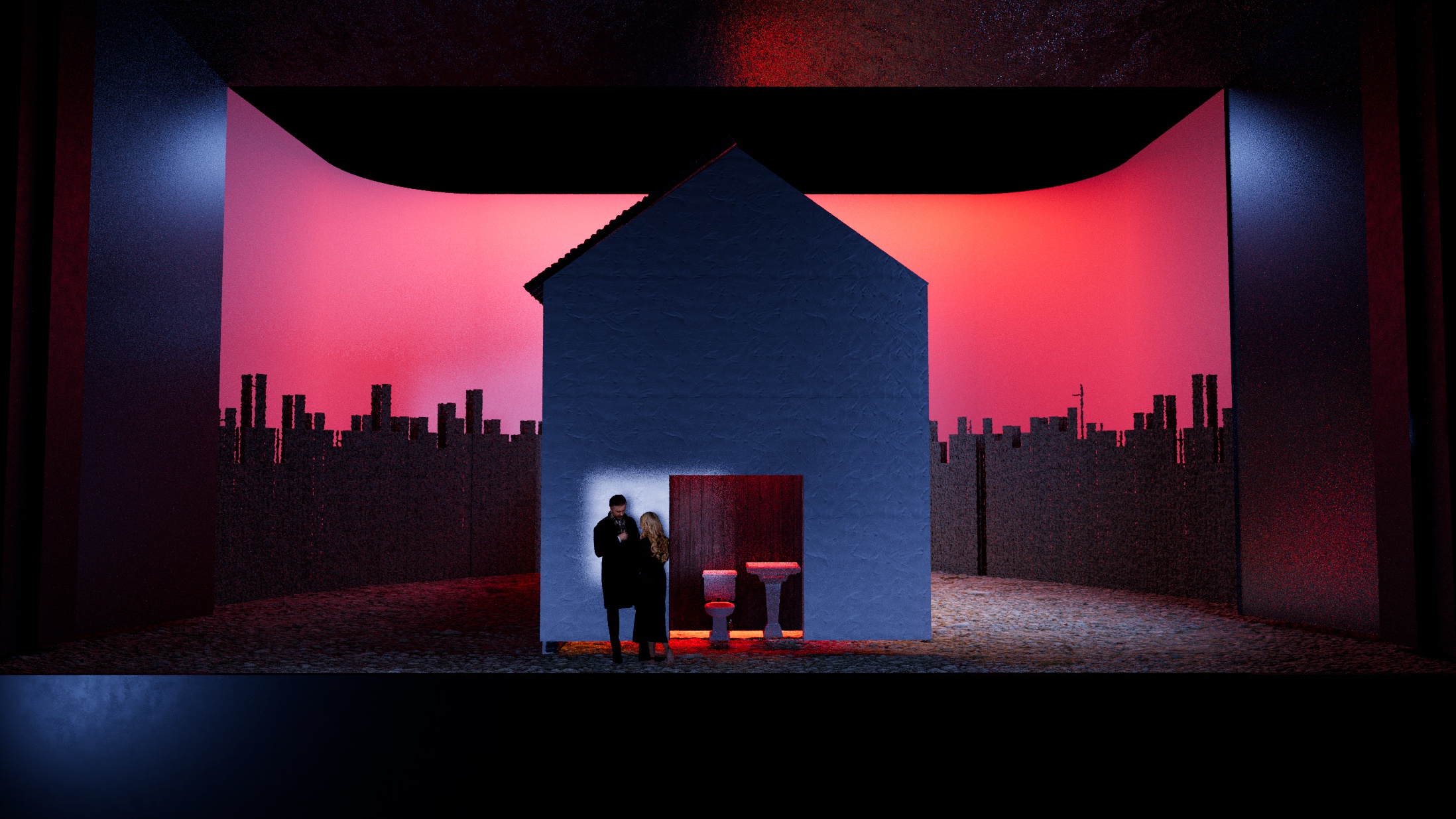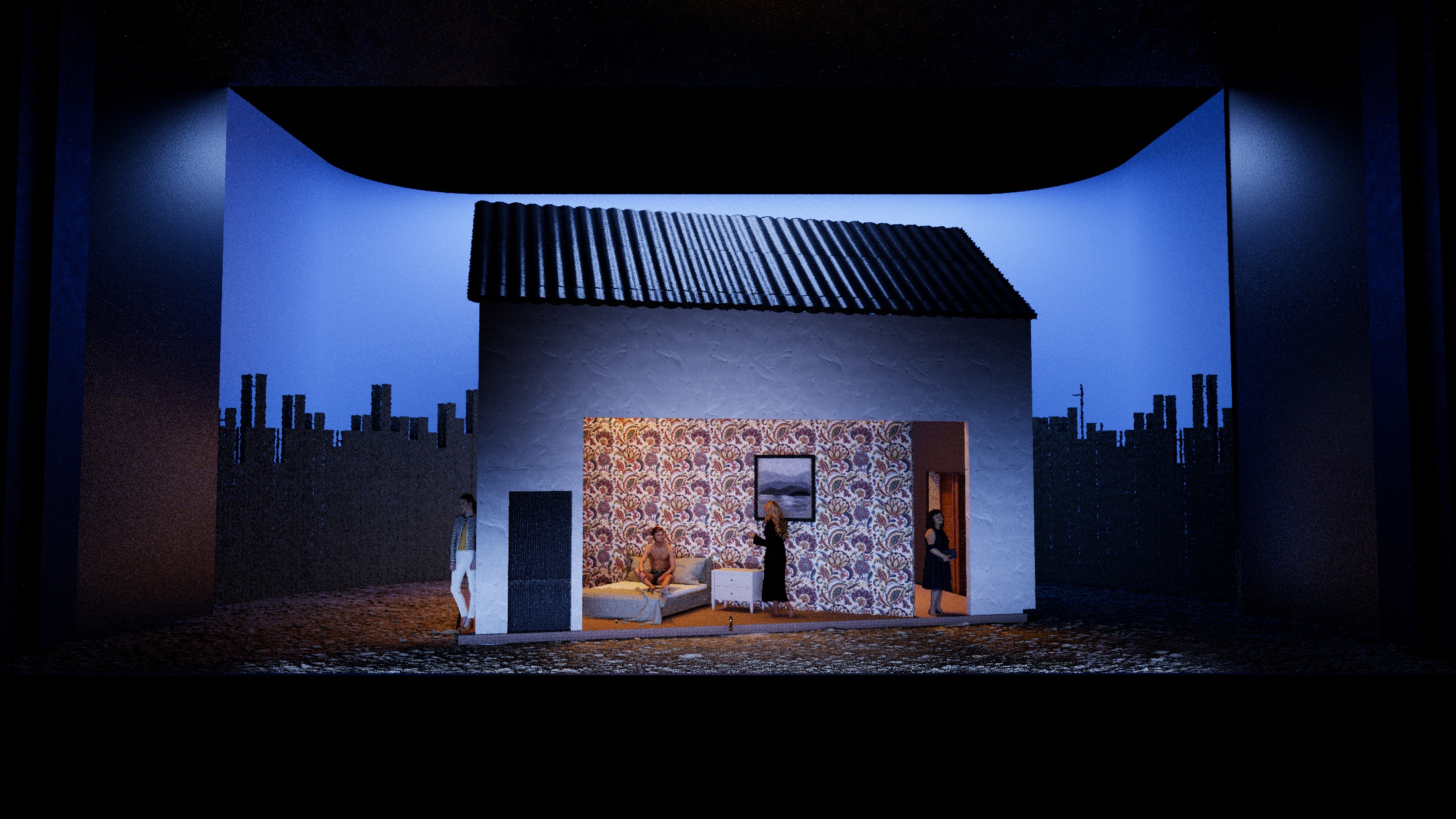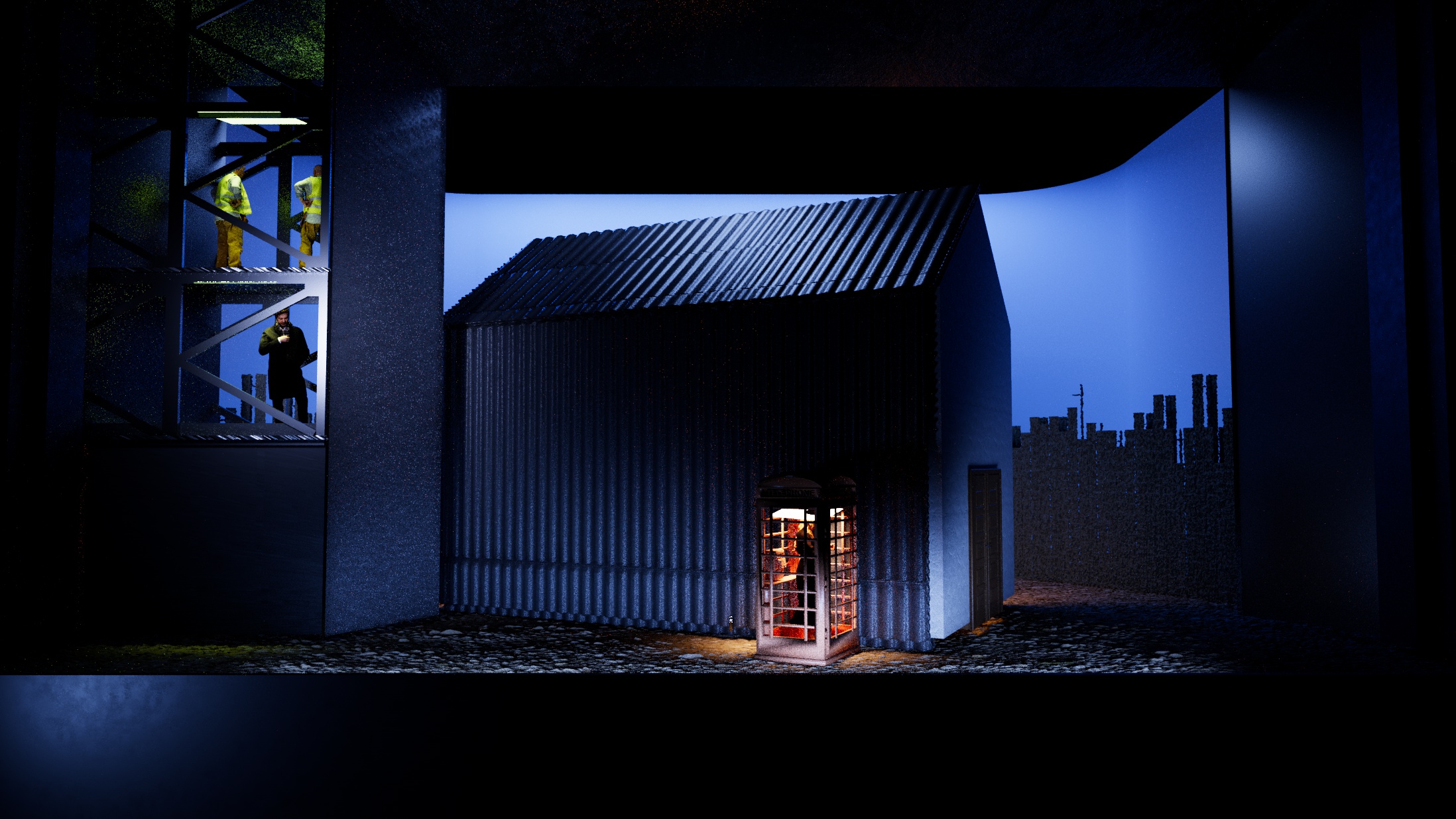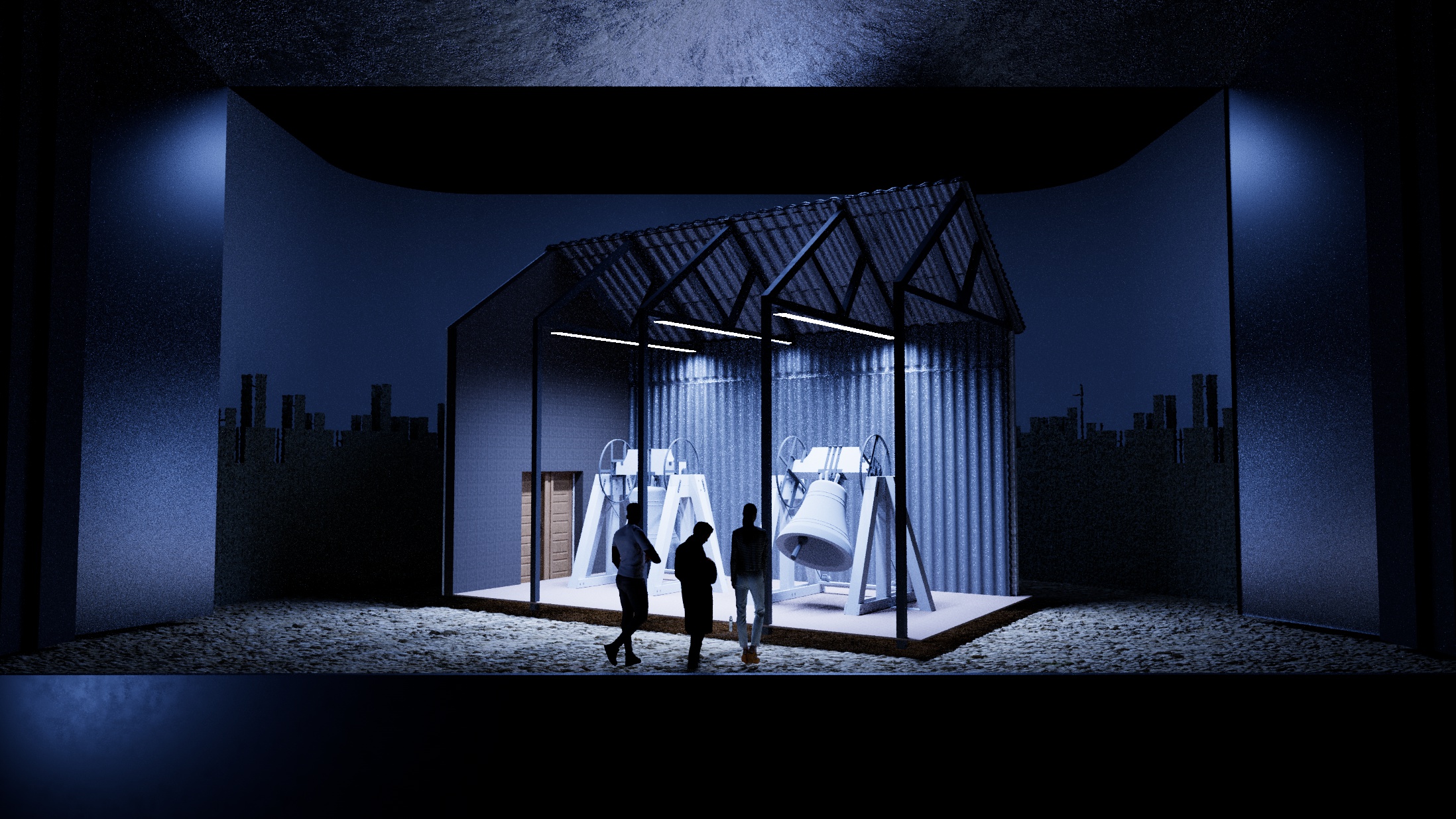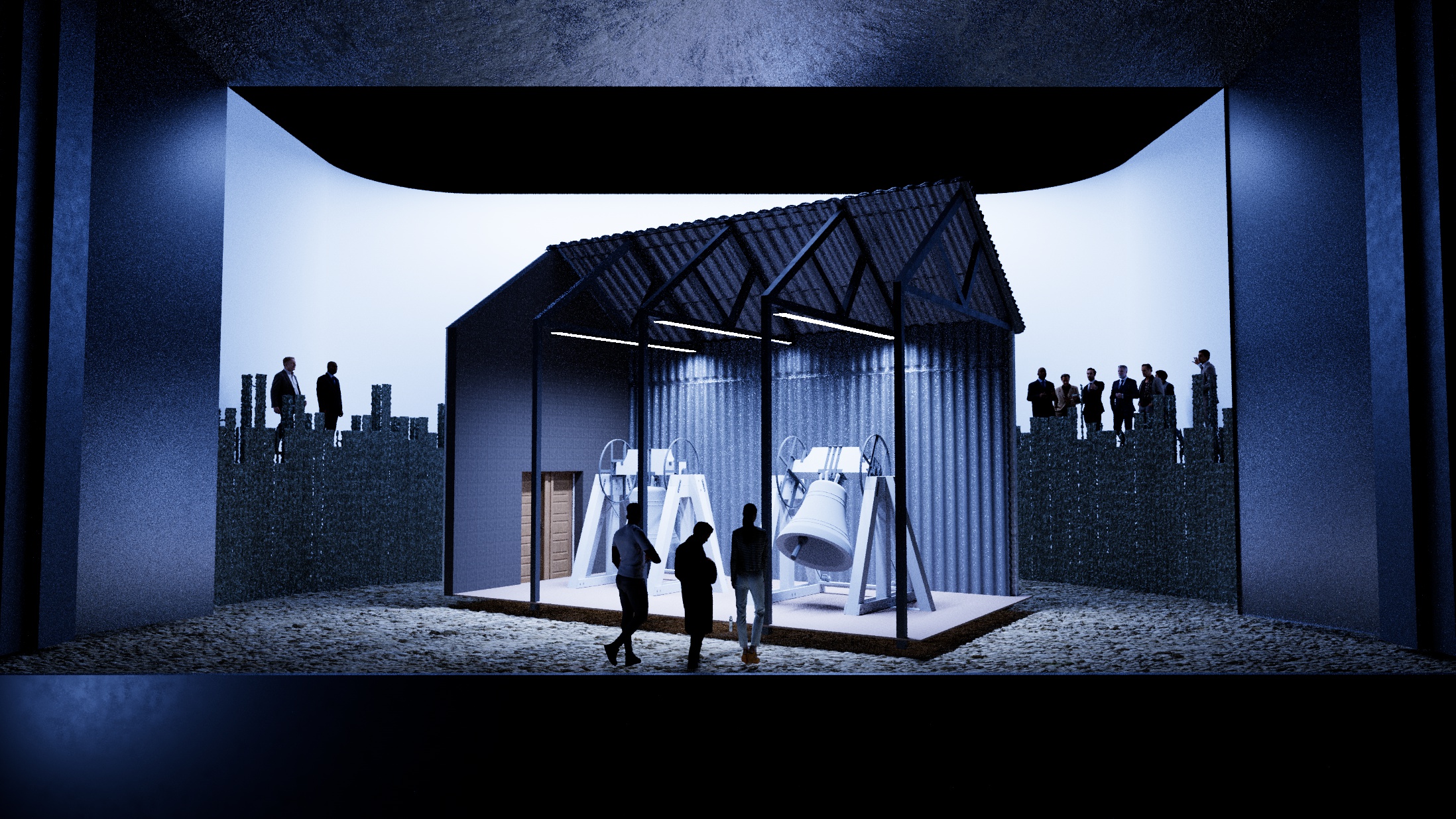CONCEPTUAL SCENIC DESIGN as part of a SUBMISSION to the OPERA AMERICA TOBIN PRIZE
COMPOSED BY MISSY MAZZOLI // LIBRETTO BY ROYCE VAVREK // DIRECTION BY NICO KRELL // COSTUMES BY ZOE ALLEN // SET BY JOSH OBERLANDER
The set for Breaking the Waves consists of a few large elements arranged in different combinations to portray the many locations in the opera and furnish an audience experience of watching tableaus that have a gritty, filmic stage logic while operating within the larger conceptual container as a whole.
The largest is a church/house structure, which is on a turntable and is constantly being changed by stagehands on the side facing away. Doors within the walls are hidden by an over layer and revealed, being peeled back each time like an onion, which allows for the variety of permutations that the church goes through in our version. This structure breaks the proscenium, intentionally giving the structure a toy like quality, pushing it out of a flat tableaux and into 3 dimensions to mimic the story’s negotiation of the romanticized and the real. The structure would have to turn back to a position with short sides facing SL and SR, in the event of an emergency to accommodate the smoke pocket, and otherwise be fireproofed – further discussion with a TD would be required.
The stage floor is a gravel treatment, taken from research of roads in the place depicted and also taken from the film – it represents a hard, protean, unforgiving landscape while have a neutral quality linking the many spaces in the piece. There are cork based treatments, usually painted onto a board with glue, that creates this gravel texture while not being sonically offensive or a slip hazard, which is what this production would have to employ.
BREAKING THE WAVES
COMPOSED BY MISSY MAZZOLI // LIBRETTO BY ROYCE VAVREK // DIRECTION BY NICO KRELL // COSTUMES BY ZOE ALLEN // SET BY JOSH OBERLANDER
The set for Breaking the Waves consists of a few large elements arranged in different combinations to portray the many locations in the opera and furnish an audience experience of watching tableaus that have a gritty, filmic stage logic while operating within the larger conceptual container as a whole.
The largest is a church/house structure, which is on a turntable and is constantly being changed by stagehands on the side facing away. Doors within the walls are hidden by an over layer and revealed, being peeled back each time like an onion, which allows for the variety of permutations that the church goes through in our version. This structure breaks the proscenium, intentionally giving the structure a toy like quality, pushing it out of a flat tableaux and into 3 dimensions to mimic the story’s negotiation of the romanticized and the real. The structure would have to turn back to a position with short sides facing SL and SR, in the event of an emergency to accommodate the smoke pocket, and otherwise be fireproofed – further discussion with a TD would be required.
The stage floor is a gravel treatment, taken from research of roads in the place depicted and also taken from the film – it represents a hard, protean, unforgiving landscape while have a neutral quality linking the many spaces in the piece. There are cork based treatments, usually painted onto a board with glue, that creates this gravel texture while not being sonically offensive or a slip hazard, which is what this production would have to employ.



